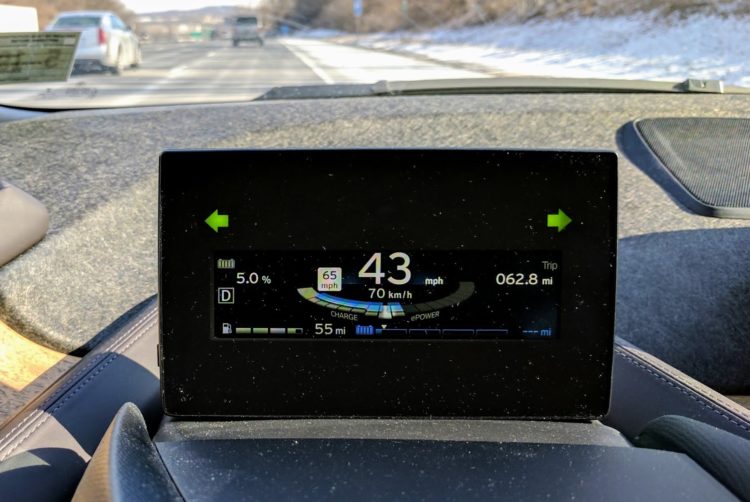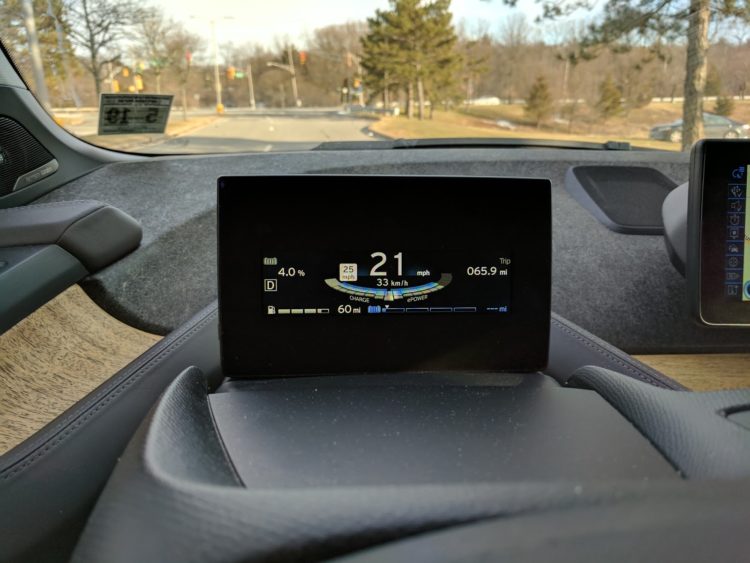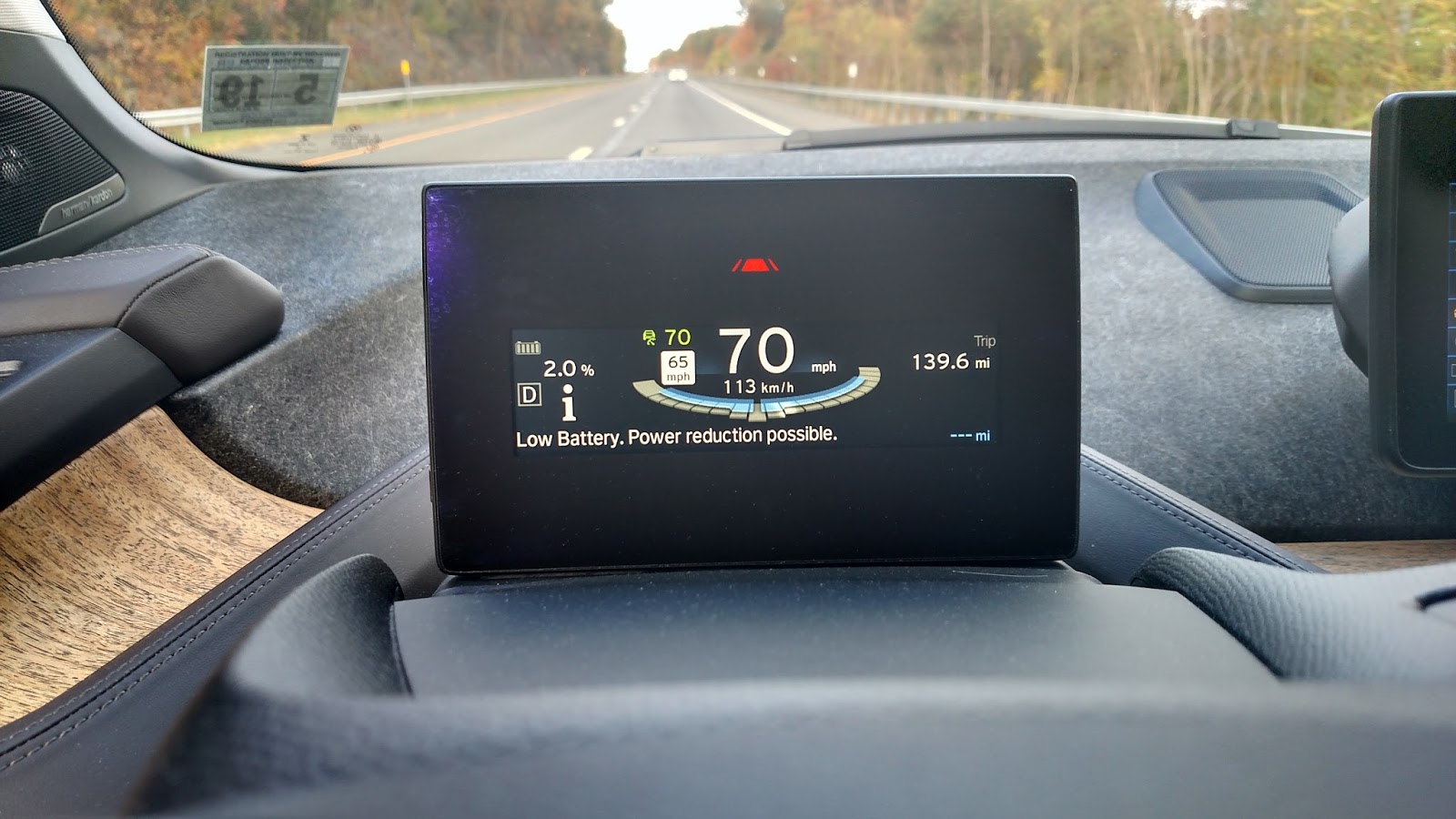Someone once said, “You could always tell the pioneers by the arrows in their back.” A recent software bug has cropped up that seems to be affecting many of the early build and higher mileage i3s that are mostly driven by the early adopters. The problem causes the car to go into reduced power mode, or in some cases shut down without warning when the display shows about 5% – 6% battery remaining.
In mid 2016, BMW released a software update, (version 16-07-501) that was supposed to correct the issue, but for some unknown reason it didn’t work on all of the vehicles. They then sent out letters to the early buyers to inform that they need a software update. Recently though, the problem seems to have become more and more common, with many owners reporting it. I’m not 100% sure if that initial software update did what it was intended to, or if it actually exacerbated the issue, because it really seemed that the problem became more widespread once people had the new software installed.
Perhaps it was just timing that made it seem that way because the cars are getting older and natural battery capacity loss is occurring. Also, the colder weather came and that could have played a role in magnifying the issue. BMW did realize the new software didn’t do what it was supposed to, and quickly issued a new version, as well as a service bulletin (B61 20 16) which informed the service centers of the problem and how to correct it. However, some centers haven’t been quick to pick up the problem, and I’ve had more than a few i3 owners ask me for help getting this problem resolved.
There are probably dozens of service bulletins issued by BMW every month, so it’s understandable that some centers might be a little slow to catch every one, but it’s now more than six months into the problem and there are still many centers that aren’t able to diagnose the problem when a car comes in with it, and that’s just too long. One potential reason they were having trouble diagnosing the problem is that the symptoms of this issue are very similar to how the car may act under normal operation when the range extender is over-taxed. It’s been well documented that the range extender has limits. If you drive at highway speeds up continuous steep inclines then there will come a point that the range extender cannot supply enough energy to maintain the speed. The car will then go into reduced power mode and slow down to about 40 mph. However, speed or excessive hill climbing isn’t the root cause of this issue, it’s actually an incorrect adaption value of the battery’s state of health, even though the results are similar.
A simple explanation of the problem is that the affected cars are incorrectly reading the battery’s state of charge (SOC), and slightly overestimating it. This doesn’t present any real problem unless you discharge the battery to well under 10%. At such a low state of charge, it’s very important to have as accurate of a reading as possible, since every percent counts when you’re trying to make a destination. Calculating the precise state of charge of a battery is very difficult, and with all EVs, the displayed SOC is a close approximation of the actual SOC, it’s not a perfectly accurate value.
The 2014 to 2016 i3s have about 19 kWh of usable battery capacity, when new. Like all batteries, as they age they lose capacity. If an i3 battery loses 10% of its original capacity, then the usable capacity is roughly 17 kWh. If the car doesn’t properly recognize the loss of capacity, it can miscalculate the remaining state of charge. That is what’s happening with some of the older i3s. The onboard battery management system (BMW calls it the SME High Voltage Battery Module) isn’t adjusting quickly enough to the capacity loss, and it is overestimating the actual remaining level of charge.
What this means is, if you drive an older i3, you may think you have slightly more range left than you actually do. There have been reports of a few i3 BEV drivers having the car slow down to reduced power mode, then crawling to a halt when the SOC gauge states that there is another 5% or 6% battery available, and 4 or 5 more miles of range still “in the tank.” Most i3 BEV owners don’t drain the battery to such a low state of charge, so they’d never even know their car is affected by this issue.

In most cases a BEV owner will be very close to their destination when they realize they have the problem, since they only had a few miles of range remaining anyway – or so they thought. On the other hand, REx owners could be many miles from their destination, as they were relying on the range extender to allow them to complete their trip. Either way, it’s not a pleasant experience, and I know because it happened to me back in December. I have one of the early 2014 i3s (the first REx delivery in the US, actually), and also one of the highest mileage i3s with over 67,000 miles on the odometer. Luckily, I was able to get home. Since I had heard of others experiencing this issue, I knew exactly what was happening. I took secondary roads home, kept the speed under 45 mph and I made it without a problem. However most other i3 owners aren’t necessarily as informed as I am about the car, and they won’t understand what’s happening or how to mitigate the issue and get to a plug.

I’m recommending all 2014 i3 owners that haven’t already had their car reprogrammed, take it to their dealer to have it checked for this problem. Tell your service writer to look up service bulletins B612016 and B612116. These bulletins will instruct the dealers on how to correct the problem. You should also make sure you have software version 16-11-502 or later. in the meantime, if you drive a BEV i3, then try not to let the SOC drop below 8%. If you have a REx, closely monitor the power bars when the REx turns on. If you see any of them disappearing, then slow down and get to a charging station as soon as possible because you can’t rely on the REx until this is fixed. If you have a 2015 or newer i3, then I wouldn’t worry about this. By the time your car might experience these symptoms, you’ll have had newer software updates that will proactively eliminate the problem before you’ve experienced it.
Recently, BMW HQ has stepped up their game and has been reaching out to their service centers to make sure they are aware of the issue and can identify it quickly. Service bulletins B612016 and B612116 have been updated with a new procedure to perform an ISTA capacity adaptation test after programming (This is a new function in ISTA 4.04.3). It should prevent future cases of range extender not turning on when the SOC drops below the threshold. At the very least, this will allow REx owners to get home if they encounter this problem because the range extender will turn on and replenish the battery enough to allow driving. However, so far what I’ve witnessed is the uptake has been uneven; some dealers are on it, and others are still struggling to identify the issue when a customer comes in. The one thing I’ve noticed is that when the owner knows the exact issue, and gives the service writer the bulletin numbers, then in nearly every case I’ve followed it’s been fixed on the first visit. Don’t let the dealership tell you there’s nothing wrong with the car. Forward them this post, if you must. There have been cases where the software update didn’t work for some reason. When that happens, the dealership needs to connect the car to BMW HQ and perform a remote IRAP session. The IRAP reprogramming will definitely resolve the issue if the software update doesn’t.
I know this because many i3 owners reach out to me for advice with their car, often when there’s an issue. In this case, I’ve had more than a couple dozen i3 owners ask if I could help them out. They have been driving the car for more than two years now, so they know this isn’t how it usually works. Yet, when they bring it in for service, often the service team tells them there’s nothing wrong. Here’s an example of what one service center told an i3 REx owner that had the issue once while driving, and another time when he tried to turn it back on to continue driving:
Hi Xxxxxx,
“It appears that you are driving the car down to a very low charge. Once it is stopped, the charge is so low that it will not let you go anywhere. They’ve told me that when the range extender kicks in, it does not charge the battery. It keeps the battery charged to get you another 10-30 miles down the road depending on driving conditions. The vehicle will reduce power and loads to help get the battery to last a little longer, how I understand it. But after you reach your destination, the car needs to be charged.”
That’s just an incorrect diagnosis, and not really a proper explanation of how the range extender works. The only reason the state of charge is too low when the vehicle stopped is because of this problem. Under normal operation, the REx will keep the SOC above the low charge threshold that prevents startup. The fact that the owner can drive it to the point that it won’t restart should immediately be a red flag that there’s a problem. In the case of this issue, the range extender is actually working properly. Its operation is based on the state of charge. The lower the state of charge, the harder the REx works to produce energy to maintain the SOC. If the car is telling the REx that there’s more than 6.5% SOC, than the REx won’t turn on. But if reality there’s actually less than 1% SOC, then the car won’t turn on. The misdiagnosis and improper response to the customer is really a microcosm of the challenges dealerships have dealing with a car like the i3 REx, that operates unlike any other car in production today.






































































